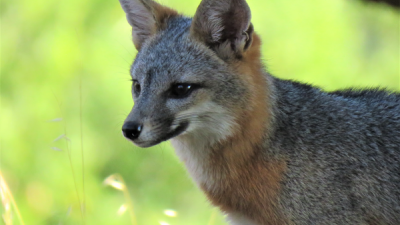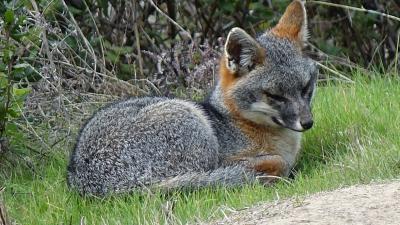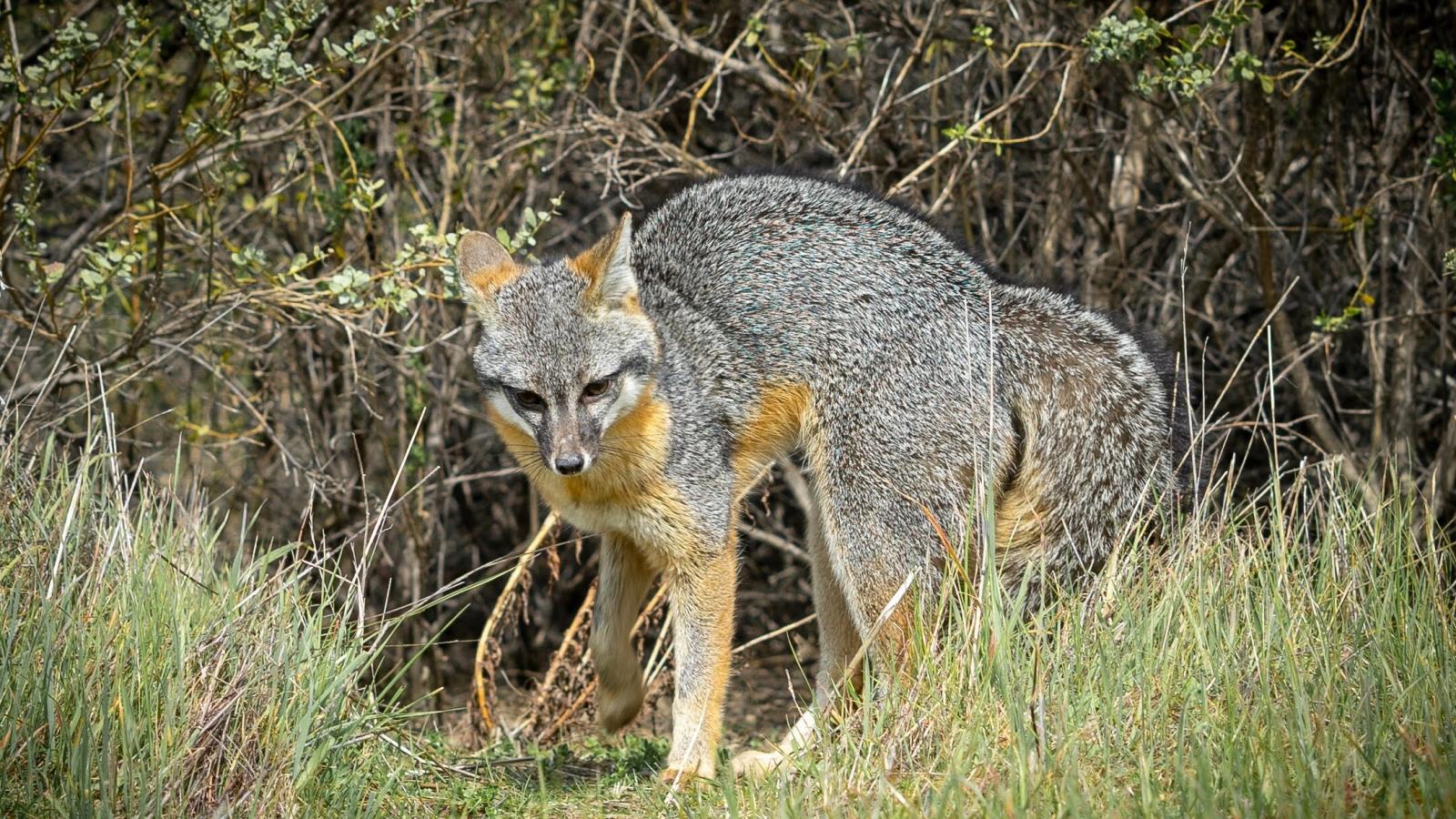Gray foxes (Urocyon cinereoargentus) are terrier-sized, omnivorous canids that can be found from the northern tip of South America to the southern portions of Canada. They are the only canid whose natural range spans both North and South America and the only fox species native to the Bay Area!
They have speckled, peppery coats with rusty red highlights on their legs, chest, shoulders, ears and neck. Genetic analyses have confirmed that gray foxes are not closely related to red foxes. In fact, gray foxes likely evolved millions of years before other common foxes—they are often considered to be the most basal canid species (meaning the most primitive of the canid species).
Gray foxes have strong, hooked claws that are specifically adapted for tree climbing. This allows them to scramble up trees in pursuit of arboreal prey like squirrels, and to escape predators like coyotes or domestic dogs. They can climb vertically up branchless tree trunks to a height of nearly 60 feet, and can jump nimbly from branch to branch. Gray foxes can be found in most rocky, brushy or forested regions throughout the United States. They have adapted well to urbanization, and can also be found thriving in urban and suburban environments. These cute canids are primarily nocturnal and crepuscular, so it is rare to spot one during the day.
Gray foxes, like many other fox species, are monogamous; the same males and females tend to mate together every year. The peak of gray fox mating season is March and April. They give birth around 53 days after mating, which means that May and June are baby fox season! So keep an eye out in the spring for cute gray fox pups!



